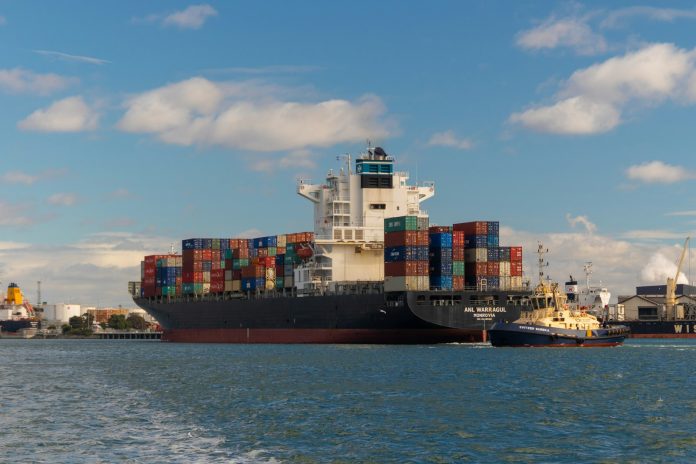When it comes to transporting goods over long distances, few methods rival the efficiency and cost-effectiveness of sea freight. Whether you’re a business owner looking to import or export products, or an individual needing to move large items internationally, sea freight remains the most cost-effective solution. However, the complexities of sea freight can be daunting if you’re unfamiliar with the process. This guide will help you understand the key aspects of sea freight shipping, ensuring your cargo reaches its destination smoothly.
What is Sea Freight?
Sea freight refers to the transportation of goods by sea, typically in large containers, from one port to another. This method is primarily used for shipping bulky items, heavy loads, or mass quantities. Sea freight is commonly chosen for international shipments as it is more affordable than air transport, especially for non-urgent deliveries. It plays a crucial role in global trade, handling a significant proportion of goods worldwide.
Types of Sea Freight Shipping
There are two main types of sea freight forwarding: full container load (FCL) and less than container load (LCL).
Full Container Load (FCL)
In this option, you rent an entire container for your goods. This method is ideal for large shipments that can fill a container or if you prefer your goods to remain separate from others. It also offers more control over the loading and unloading process, as FCL has fewer stops, often resulting in faster transit times.
Less than Container Load (LCL)
If your shipment doesn’t fill a whole container, you can share space with other shipments. Smaller loads often use this option because it’s more affordable than FCL. However, delivery times may be longer due to the additional handling required during consolidation and deconsolidation.
The Sea Freight Process
Understanding the sea freight process can help you better manage your shipping needs:
The security of your shipment depends on how well it is packed. Freight forwarders will help you choose between FCL and LCL, provide quotes, and handle the necessary documentation.
Alternatively, you can book your shipment through a freight forwarder or shipping company. They will offer a quote, determine the most suitable shipping option, and arrange the required paperwork.
Customs clearance involves submitting documents like commercial invoices, packing lists, and bills of lading to customs authorities before shipment. The primary goal is to ensure that imported goods comply with regulations and that any applicable taxes are paid.
Once cleared, goods are loaded into containers and transported to the port via road or rail. After being loaded onto ships, the vessels cross oceans to reach their destination.
Customs clearance at the destination is similar to the process in the country of origin, with all relevant paperwork required to avoid delays. Your goods will either be delivered directly to the specified address (door-to-door delivery) or to a central location for collection.
Please note that late arrivals are not permitted, as customs officials require documentation, such as bills of lading and delivery receipts, within ten days of arrival for items needing priority clearance at ports.
Benefits of Sea Freight Shipping
Sea freight is preferred for international trade for several reasons:
- Affordability: Sea freight is significantly cheaper than air freight, particularly for large or heavy consignments. The larger the shipment, the lower the cost per unit, making it ideal for bulk deliveries.
- High Volume Capacity: Major shipping companies operate vessels that can carry extremely heavy and bulky cargo, like containers of goods with Samsung phones, which would be prohibitively expensive to transport by air.
- Lower Environmental Impact: Compared to air transport, sea freight produces less pollution, making it a more environmentally friendly choice for long-distance shipping.
- Global Reach: Ports are present in virtually every country, allowing for worldwide shipping. This makes it easy for businesses to access international markets. Additionally, many shippers offer free shipping on large orders, further reducing costs. Sea freight offers economical and reliable transport options, enabling businesses to reach customers globally.
Challenges of Sea Freight
Despite its advantages, sea freight has certain challenges:
- Extended Transit Times: Unlike air freight, sea shipments can take several days or even weeks, particularly over long distances. This makes it less suitable for perishable goods.
- Complex Paperwork: The documentation required for sea freight is often more complex than for other shipping methods, especially when dealing with international customs regulations.
- Possibility of Delays: Unfavourable weather, congested ports, and slow customs clearance can all contribute to delays in sea freight delivery.
4 Tips for Smooth Sea Freight Shipping
To ensure a smooth sea freight experience, consider these tips:
- Plan in Advance: Given the longer transit times, it’s crucial to plan your shipments well ahead to avoid delays.
- Work with a Reliable Freight Forwarder: Partnering with a reputable freight forwarder, such as Couriers & Freight Australia, can help you navigate the complexities of sea freight, ensuring all documentation is in order and that your goods are shipped efficiently and safely.
- Choose the Right Shipping Option: Whether you opt for FCL or LCL, make sure it suits your shipping needs in terms of cost, speed, and security.
- Understand Customs Regulations: Familiarise yourself with customs regulations in both the origin and destination countries to avoid delays or unexpected costs.
Conclusion
For individuals and businesses shipping goods over long distances, sea freight is an excellent option. By understanding the process, its benefits, and potential challenges, you can make informed decisions to ensure your cargo arrives on time and within budget. With proper preparation and a reliable shipping agent, sea freight can be a smooth and efficient way to move goods across the globe.



